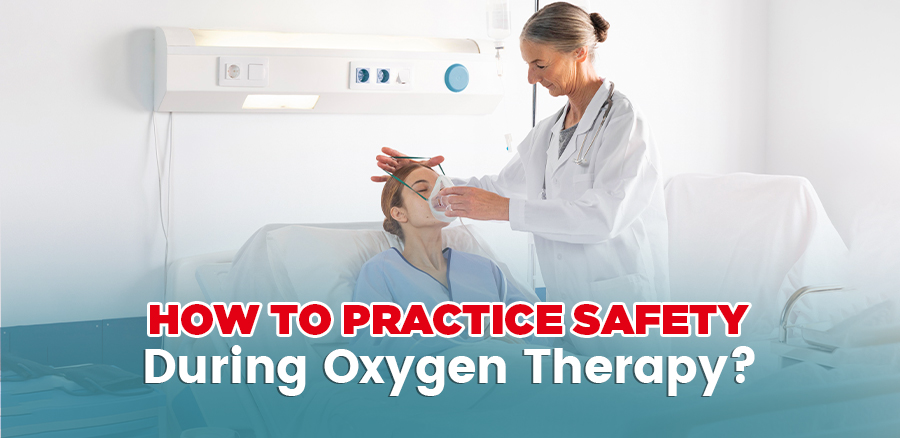Home oxygen therapy is a vital component of respiratory care for individuals with chronic respiratory conditions. Oxygen concentrators are commonly used to deliver supplemental oxygen to patients in the comfort of their own homes. While these devices offer numerous benefits, it is crucial to prioritize safety when incorporating oxygen concentrators into a home environment.
As more and more people require oxygen therapy at home, it’s essential to understand the basics of oxygen concentrators. Oxygen concentrators are devices that extract oxygen from the air and deliver it to the patient. Curious to know why they are important at home? For starters, they alleviate the need for heavy tanks and are more economical in the long run. In this blog post, we will explore essential guidelines for home oxygen safety and discuss how to minimize risks associated with oxygen therapy.
Understanding Oxygen Concentrators
Oxygen concentrators are medical devices that extract oxygen from the surrounding air, concentrate it, and deliver it to individuals who require supplemental oxygen therapy. Unlike oxygen cylinders or tanks, which need to be refilled or replaced, oxygen concentrators offer a continuous and sustainable source of oxygen. They are widely used in the home setting due to their convenience, reliability, and cost-effectiveness.
Types of Oxygen Concentrators
When it comes to oxygen concentrators, there are two main types:
Continuous Flow Oxygen Concentrators
These provide a constant flow of oxygen that is delivered to the user through nasal cannulas or oxygen masks. These types of concentrators work best for those who require a steady flow of oxygen at all times, even while sleeping.
Pulse Dose Oxygen Concentrators
This type of oxygen concentrator, on the other hand, deliver oxygen in short bursts when the user inhales. This type of concentrator is more portable and convenient for those who require oxygen therapy on the go.
When deciding which type of concentrator is right for you, it is important to consider your specific oxygen needs and lifestyle. It’s always best to consult with your healthcare provider to determine which type of oxygen concentrator is best suited for you.
Home Oxygen Safety Best Practices
Proper Placement:
Oxygen concentrators should be placed in a well-ventilated area, allowing for adequate air circulation and minimizing the risk of overheating. Ensure that the concentrator is positioned away from heat sources, such as stoves, heaters, or direct sunlight. Avoid placing the device in confined spaces, such as closets or cabinets, as this can restrict airflow and increase the risk of heat build-up.
Electrical Safety:
Oxygen concentrators require a power source to function. It is essential to follow electrical safety guidelines when connecting and using the device. Avoid using extension cords or power strips, as they can overload the electrical circuit and potentially lead to fires. Instead, connect the concentrator directly to a grounded outlet and ensure the outlet is properly grounded to prevent electrical hazards.
No Smoking Policy:
Smoking or allowing others to smoke near oxygen concentrators is extremely dangerous and can result in fires or explosions. Establish a strict no-smoking policy in the area where the oxygen concentrator is used, and educate family members, visitors, and caregivers about the potential hazards of smoking near oxygen-enriched environments.
Fire Safety Precautions:
Oxygen supports combustion, making it crucial to take precautions to minimize fire risks. Keep oxygen concentrators at least six feet away from open flames, such as candles, fireplaces, or gas stoves. Avoid using flammable materials, including aerosol sprays or oil-based products, in the vicinity of the concentrator. It is also advisable to install smoke detectors and fire extinguishers in the home and ensure they are regularly tested and maintained. Make sure that your carbon monoxide detectors are functioning properly as well.
Regular Maintenance:
Oxygen concentrators require regular maintenance to ensure optimal performance and safety. Follow the manufacturer’s guidelines for cleaning and maintenance, including filter replacements and device inspections. Routinely inspect the device for any signs of damage or malfunction, and promptly report and address any issues to the manufacturer or healthcare provider.
Prevention of Oxygen Accumulation:
Oxygen is not only necessary for patients but also poses risks if it accumulates in enclosed spaces. Avoid allowing oxygen tubing to become twisted or tangled, as this can restrict the oxygen flow and lead to an increased concentration of oxygen around the patient. Ensure that oxygen tubing is positioned properly to allow for adequate oxygen delivery and prevent entanglement.
Education and Training:
Proper education and training are vital for patients, caregivers, and family members to ensure the safe and effective use of oxygen concentrators. Healthcare providers should provide comprehensive instructions on the operation, maintenance, and safety considerations associated with oxygen concentrators. Patients and caregivers should understand the signs of oxygen depletion or malfunction and know how to respond to emergencies promptly.
Conclusion
Oxygen concentrators are valuable tools in delivering home oxygen therapy to individuals with chronic respiratory conditions. However, it is essential to prioritize safety when incorporating these devices into a home environment. By following best practices such as proper placement, electrical safety, no smoking policies, fire safety precautions, regular maintenance, prevention of oxygen accumulation, and education and training, we can minimize the risks associated with home oxygen therapy.
As you look around for information about oxygen concentrators, do browse through our collection of informative blogs about using oxygen concentrators. Our website also hosts several amazing oxygen concentrator models for every budget.

